dbt Data Modeling
In today's data-driven business landscape, organizations require efficient and flexible systems for data analysis and decision-making. Modern data warehouses must support rapid iteration while maintaining data quality and reliability. dbt (Data Build Tool) is a powerful data transformation framework designed specifically for modern data modeling, testing, and deployment.
By combining dbt's transformation capabilities with Tacnode's distributed storage and compute advantages, you can create a robust, flexible, and maintainable data warehouse ecosystem. This guide walks you through building data pipelines from initial setup to production deployment.
Prerequisites
Before getting started, ensure you have the following tools installed:
Required Software
- Python 3 - Download from Python.org or use your system package manager
- Git - Download from Git-scm.com or use your system package manager
- VS Code - Download from Visual Studio Code
Installing dbt
Install dbt with PostgreSQL support using pip:
dbt Core Concepts
Understanding these fundamental concepts is essential for effective dbt modeling:
Configuration Files
schema.yml- Defines table metadata including descriptions, tags, and test configurationsprofiles.yml- Contains database connection settings and environment configurations
Data Sources
- Seeds - Load CSV files for dimension tables or small reference datasets
- Sources - Define external tables (structure and data managed outside dbt)
- Models - SQL-based transformations that create new tables or views
Key Functions
source()- Establishes lineage between models and source tablesref()- Creates dependencies between models for proper execution order
Configuration Examples
Database Schema Definition
Create comprehensive metadata definitions in your schema.yml files:
Data Lineage Management
dbt automatically generates lineage diagrams based on source() and ref() function usage, providing clear visibility into data dependencies and transformation flows.
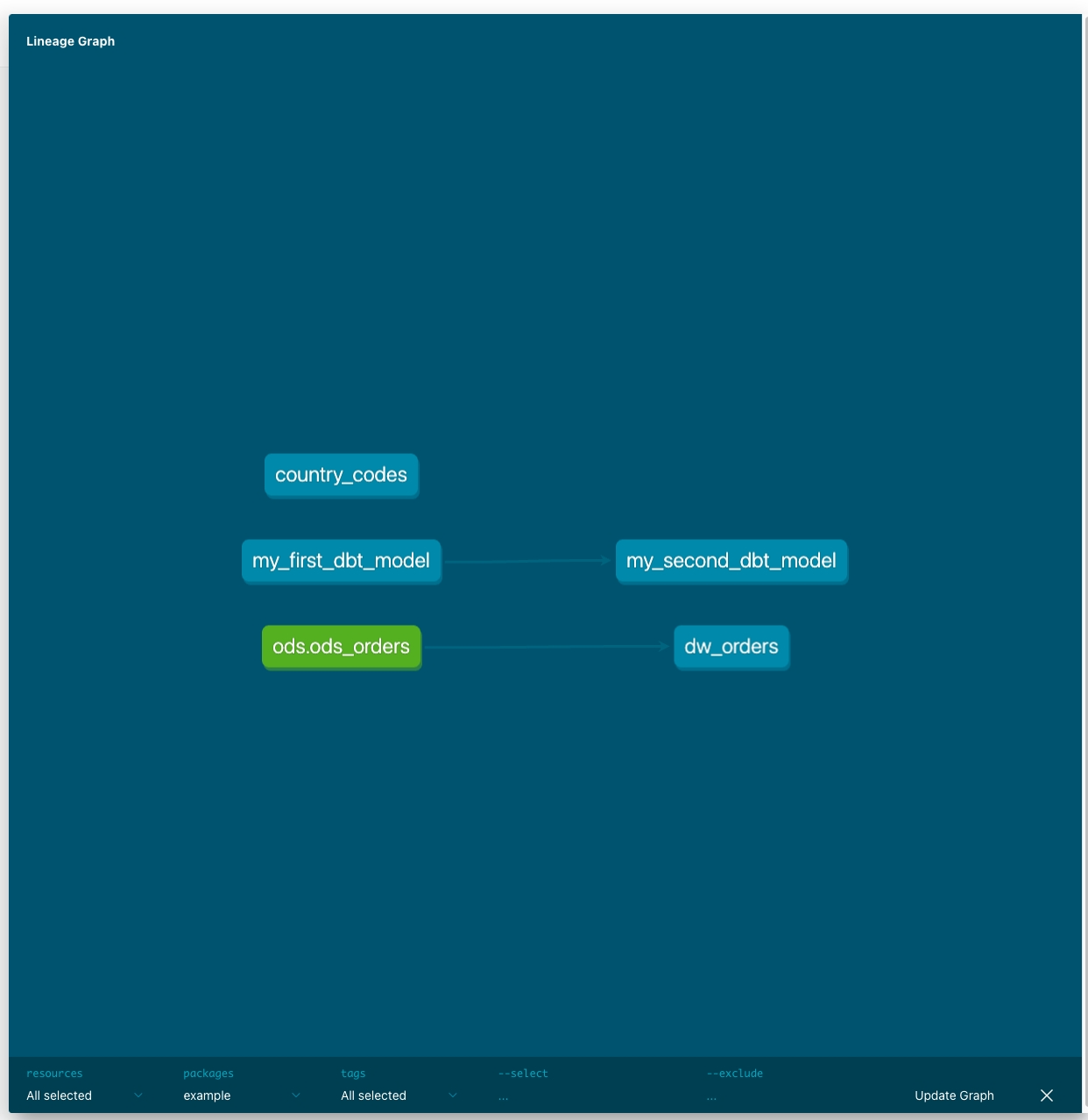
Hands-On Tutorial
Project Initialization
Create and initialize a new dbt project:
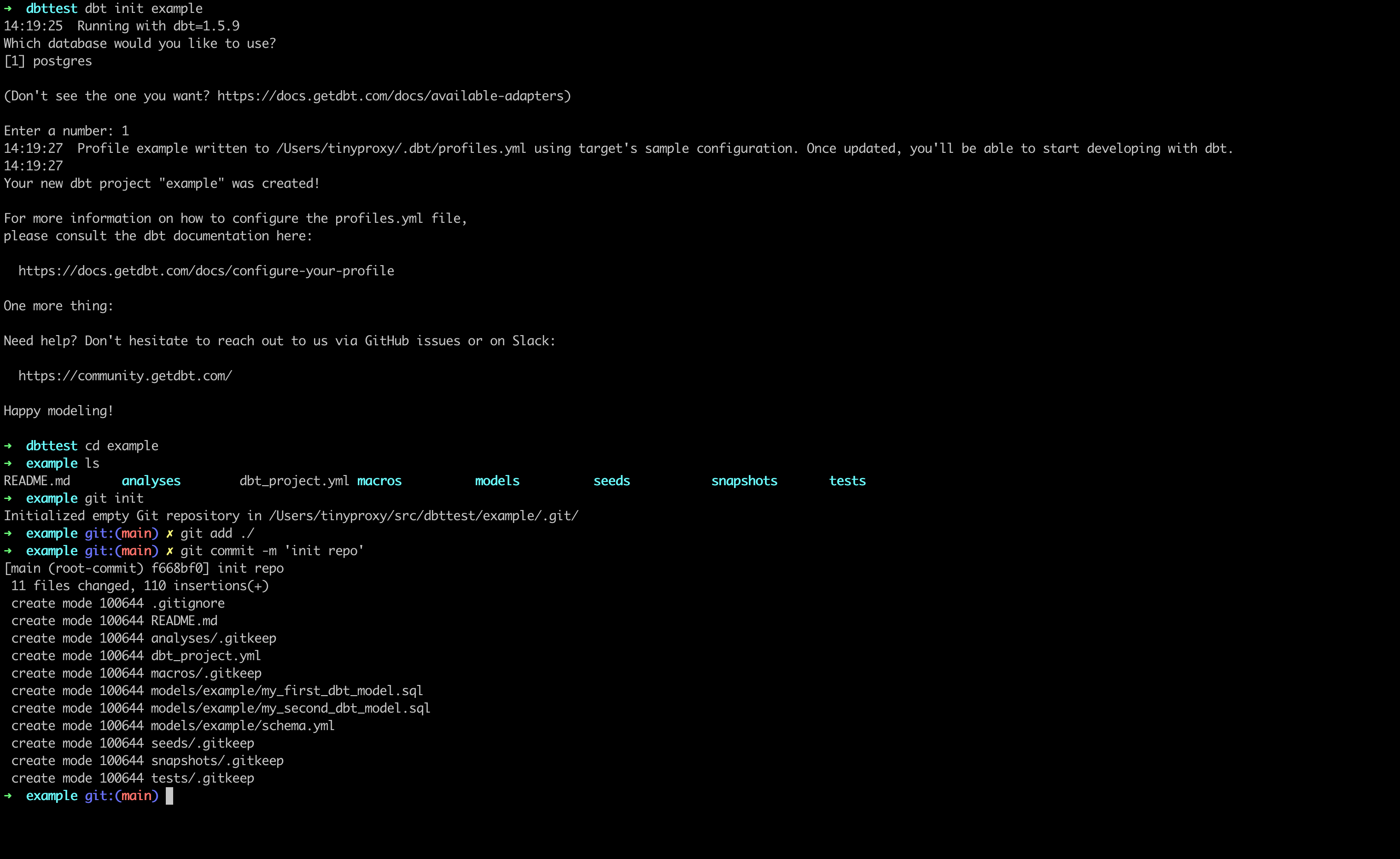
Running Built-in Examples
Execute the default models and tests to verify your setup:
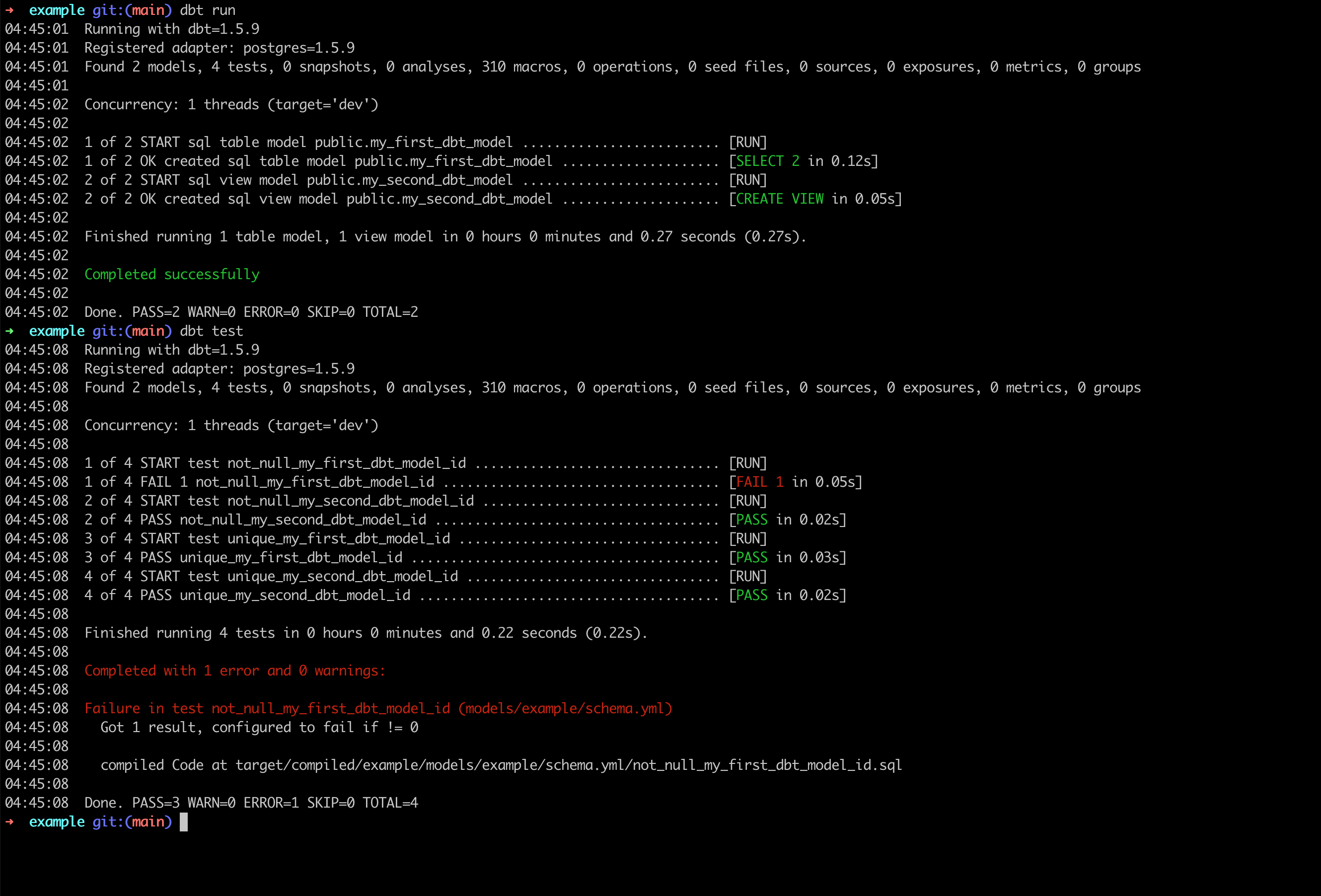
Troubleshooting Test Failures:
If you encounter test failures like not_null_my_first_dbt_model_id, check the model definition. The issue is typically in models/example/my_first_dbt_model.sql where line 16 generates a NULL value.
Solution: Uncomment line 27 by changing -- where id is not null to where id is not null.
After fixing, run the commands again:
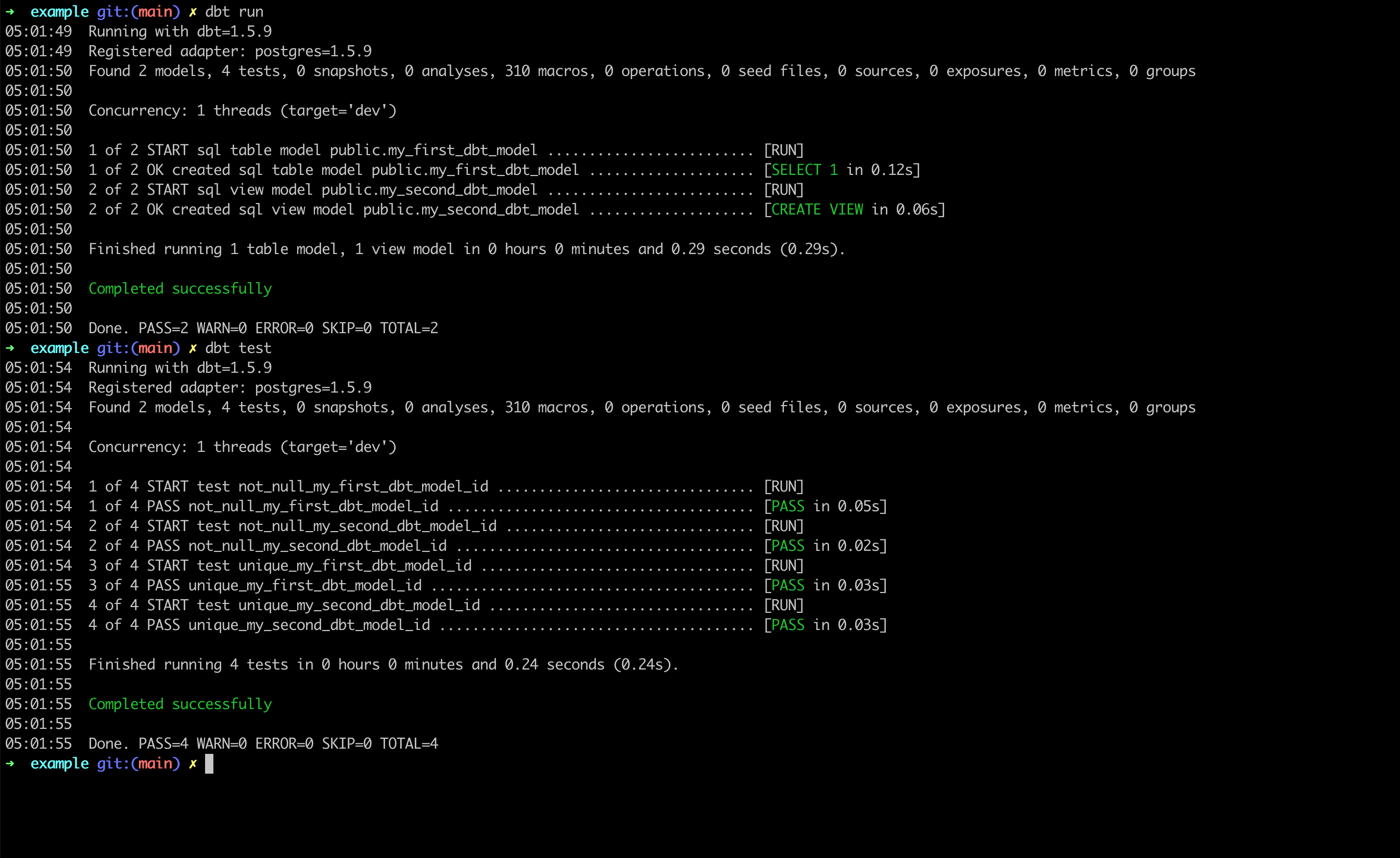
Loading Reference Data with Seeds
Seeds enable you to load CSV files as reference tables:
- Download the sample file: country_codes.csv
- Place it in the
seeds/directory - Load the data:

Verify the loaded data using psql:
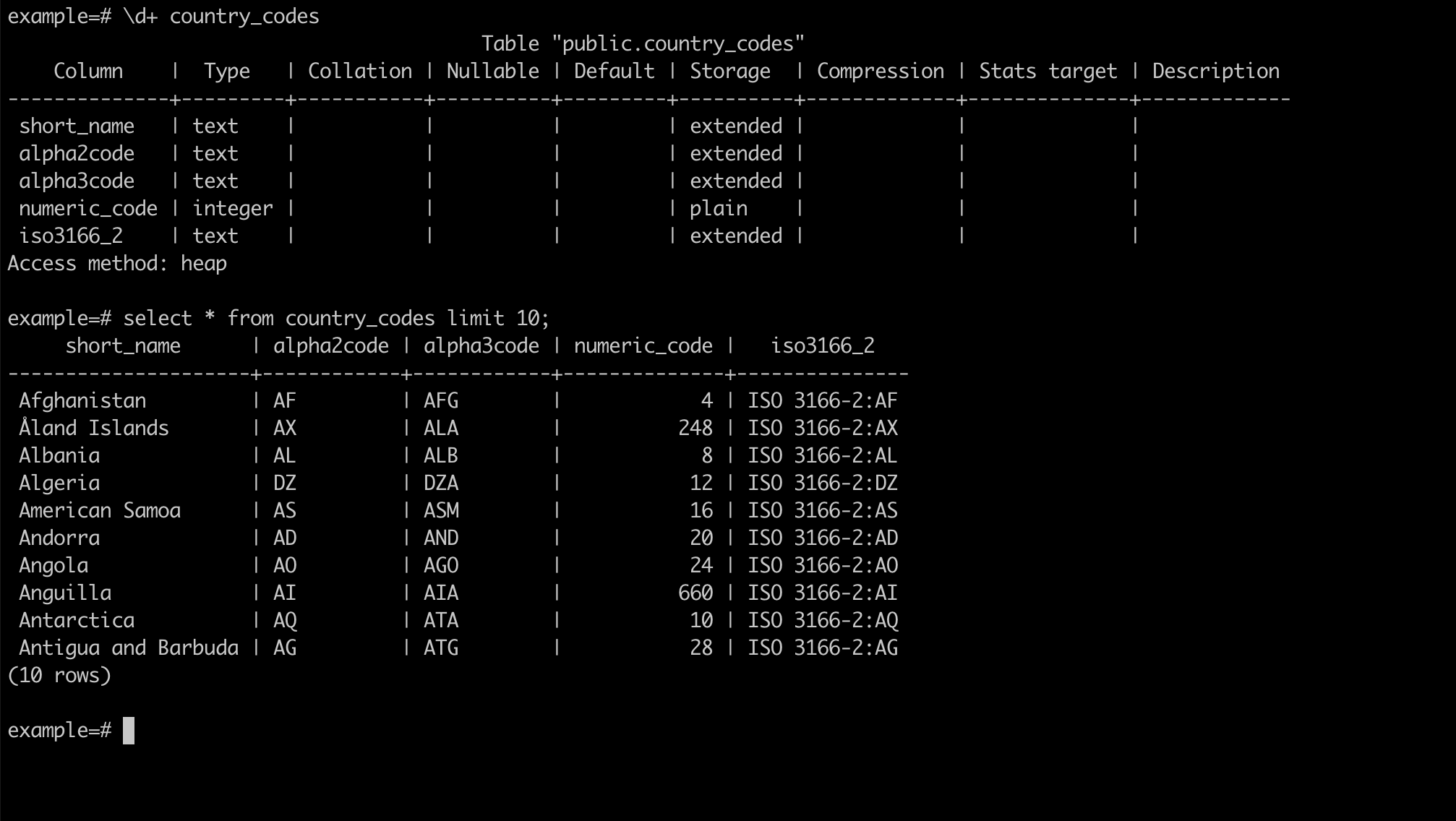
Creating Custom Tests
Implement custom data quality tests for business-specific validation rules:
- Define test configuration in
seeds/schema.yml:
- Create custom test macro in
tests/generic/count_between.sql:
- Execute the custom test:

Building Production Models
Create production-ready models with proper source definitions:
-
Load sample data:
- Download: ods_orders.sql.gz
- Extract and load:
psql <connection_string> -f ods_orders.sql
-
Define source schema in
models/erp/schema.yml:
- Create cleaned model in
models/erp/dw_orders.sql:
- Execute the model:
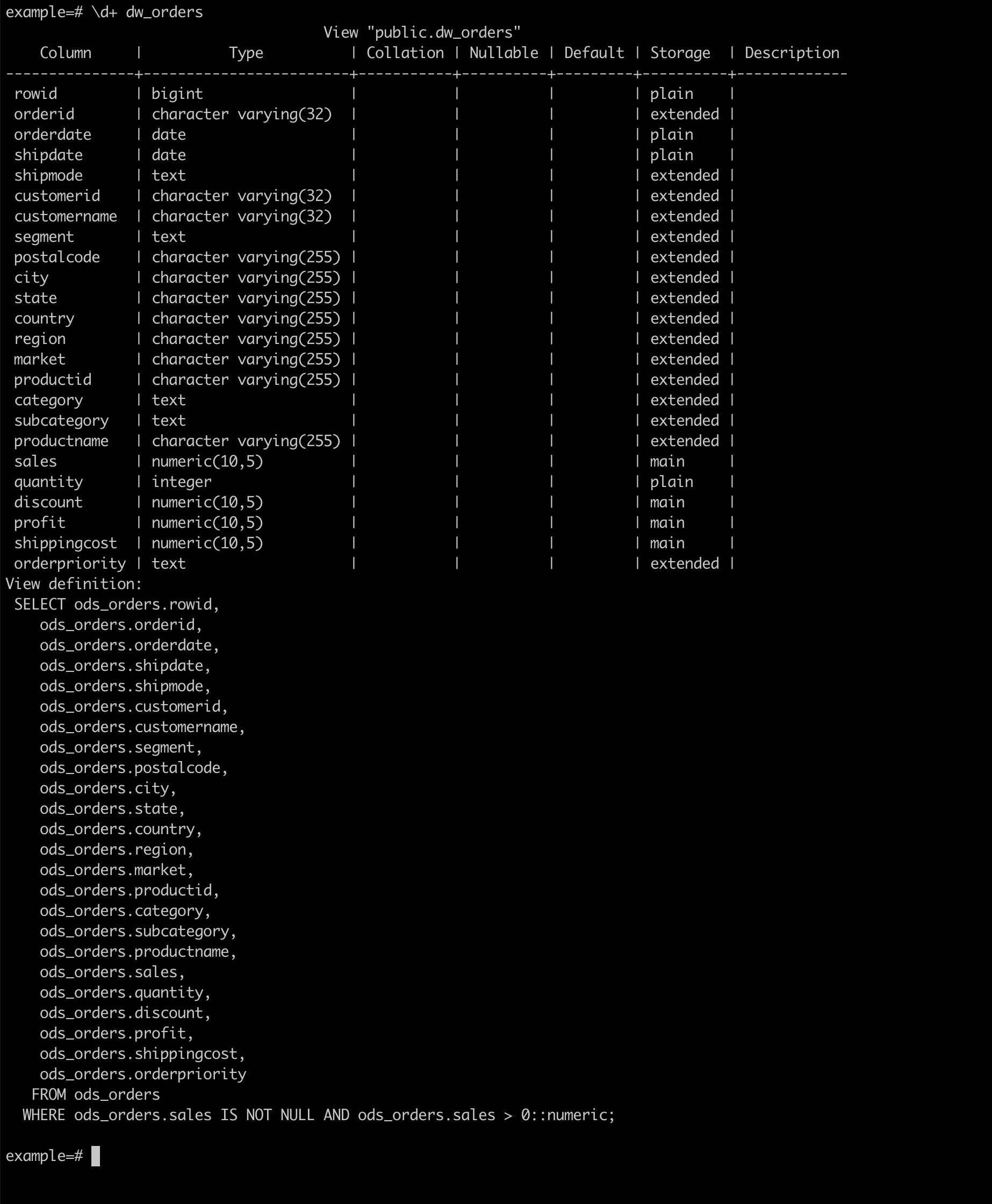
Documentation Generation
Generate comprehensive documentation for your data models:
- Build documentation:
- Serve documentation locally:
The documentation includes interactive lineage graphs and detailed model descriptions:
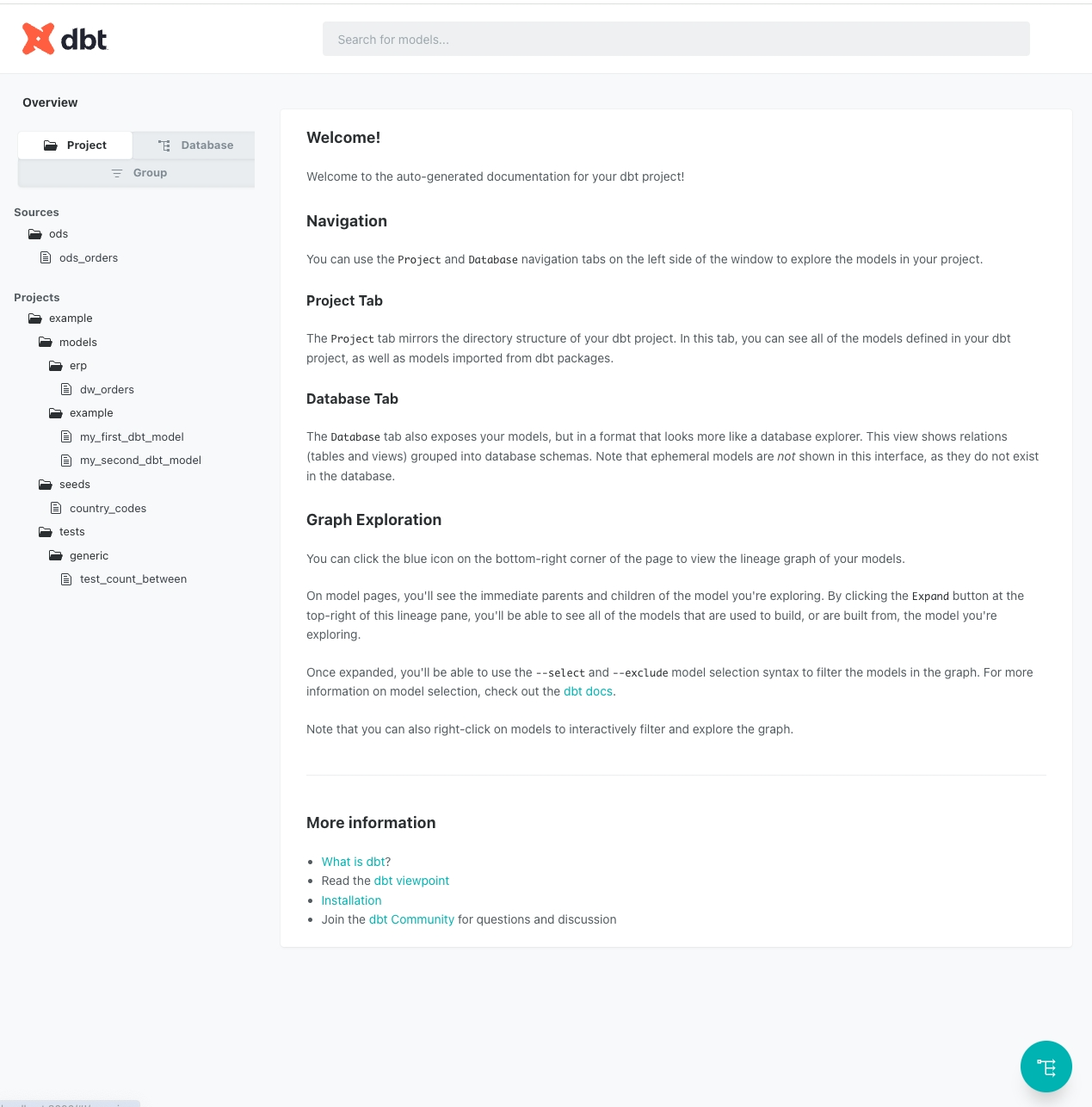
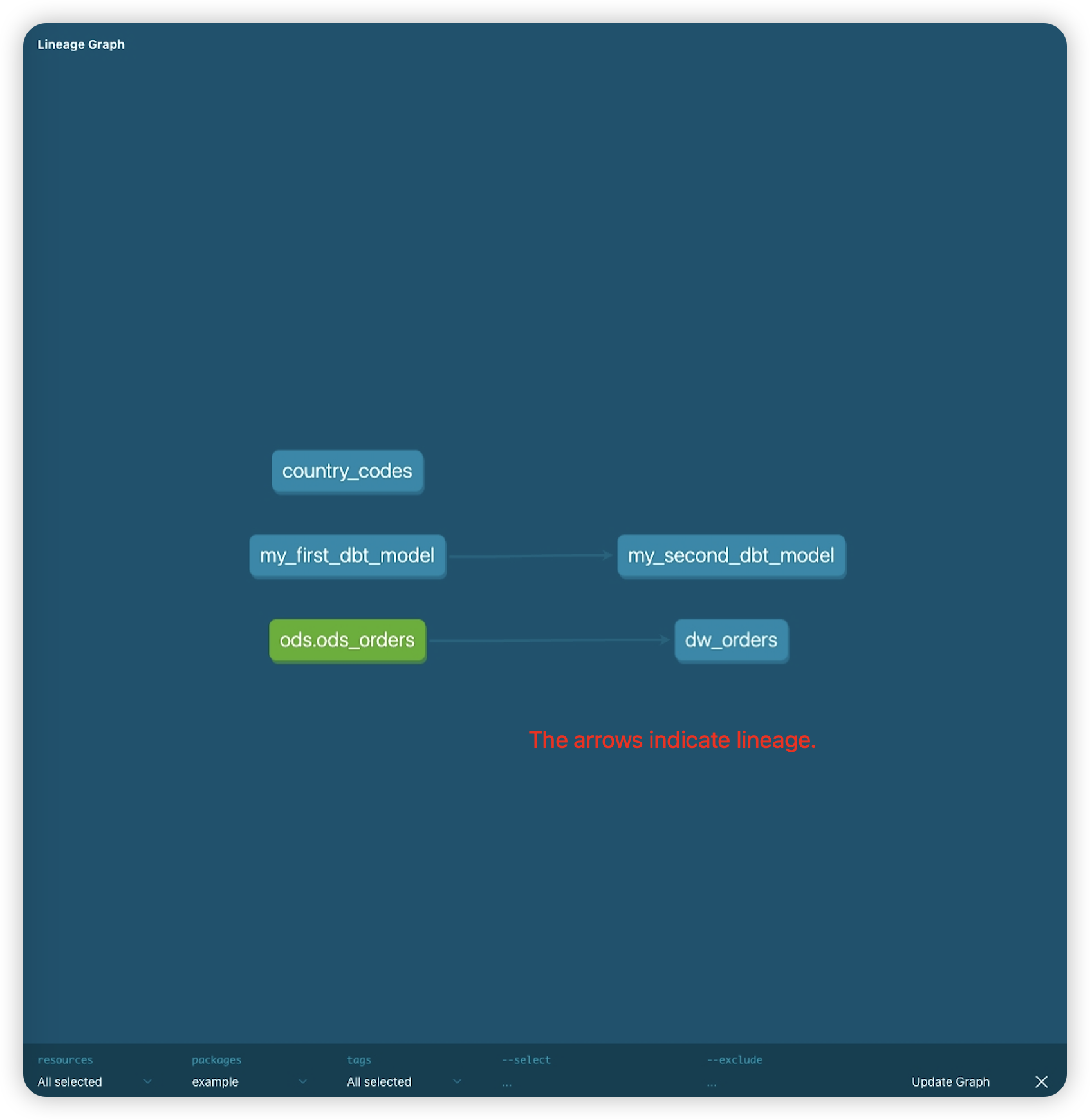
Production Configuration
Database Connection Setup
Configure your production connection in profiles.yml:
File Location:
- macOS/Linux:
$HOME/.dbt/profiles.yml - Windows:
C:\Users\<username>\.dbt\profiles.yml
Configuration:
Best Practices
Model Organization
- Staging Models: Clean and standardize raw data
- Intermediate Models: Business logic and joins
- Mart Models: Final tables for analytics and reporting
Performance Optimization
- Use
{{ config(materialized='table') }}for frequently accessed models - Implement incremental models for large datasets
- Add appropriate indexes in post-hooks
Data Quality
- Implement comprehensive testing at each layer
- Use custom tests for business-specific validation
- Monitor test results in CI/CD pipelines
Documentation
- Maintain detailed descriptions for all models and columns
- Include business context and assumptions
- Keep documentation current with code changes
Sample Project
Download the complete example project: example.tgz
The project includes:
- Complete model definitions
- Custom tests and macros
- Production-ready configuration
- Git history showing incremental development steps
Review the git commit history to understand the step-by-step development process and best practices implementation.